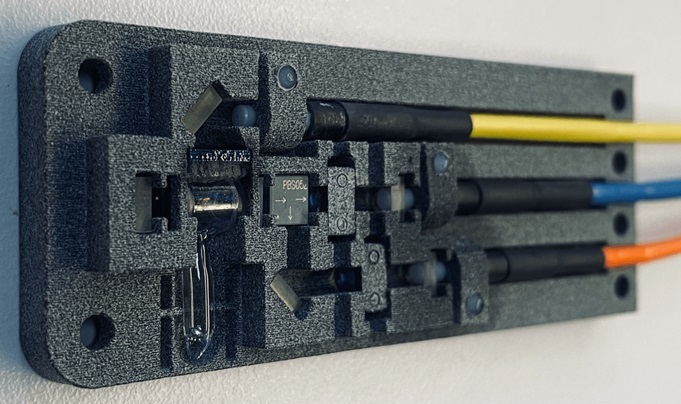World's First Sensor Detects Errors in MRI Scans Using Laser Light and Gas
Posted on 03 May 2024
MRI scanners are daily tools for doctors and healthcare professionals, providing unparalleled 3D imaging of the brain, vital organs, and soft tissues, far surpassing other imaging technologies in quality. Despite their critical role in healthcare, these machines are not without faults. The strong magnetic fields within MRI scanners are prone to fluctuations, causing scan errors and disturbances that necessitate regular calibration. This necessity limits the use of advanced scanning methods, such as spiral sequences, which could significantly reduce the time required for diagnosing conditions like blood clots, sclerosis, and tumors. Spiral sequences could also advance MRI research, particularly in studying brain diseases, but the instability of the magnetic field currently makes such scans unfeasible.
Theoretically, these issues could be addressed by a sensor that monitors and maps magnetic field changes, allowing for computer corrections of the imaging errors. However, practically implementing this has been challenging, as traditional sensors that could perform this task disrupt the magnetic field due to their electrical nature and metal components. A breakthrough has now been achieved by a researcher at the University of Copenhagen (Copenhagen, Denmark), who has invented a new type of sensor. This sensor operates using laser light within fiber cables and a small glass container filled with gas, proving effective in prototype tests.

MRI scanners function by generating a powerful magnetic field that aligns protons in the body’s water, carbohydrates, and proteins. These protons are then disturbed by pulsed radio waves, causing them to spin out of alignment. As they realign with the magnetic field, they emit radio waves that are captured to create real-time 3D images of the targeted tissues. The new sensor precisely maps disturbances in the magnetic field, identifying the location and magnitude of these disruptions. This innovative development could soon allow for the correction of distorted MRI images, ensuring that they are accurate and reliable based on the sensor’s data, thus enhancing the effectiveness and reliability of MRI diagnostics.
"First we demonstrated that it was theoretically possible, and now we have proven that it can be done in practice," said Hans Stærkind, the main architect behind the sensor and device that comes with it. “In fact, we now have a prototype that can basically make the measurements needed without disturbing the MRI scanner. It needs to be developed more and fine-tuned, but has the potential to make MRI scans cheaper, better and faster – although not necessarily all three at once.”
Related Links:
University of Copenhagen













